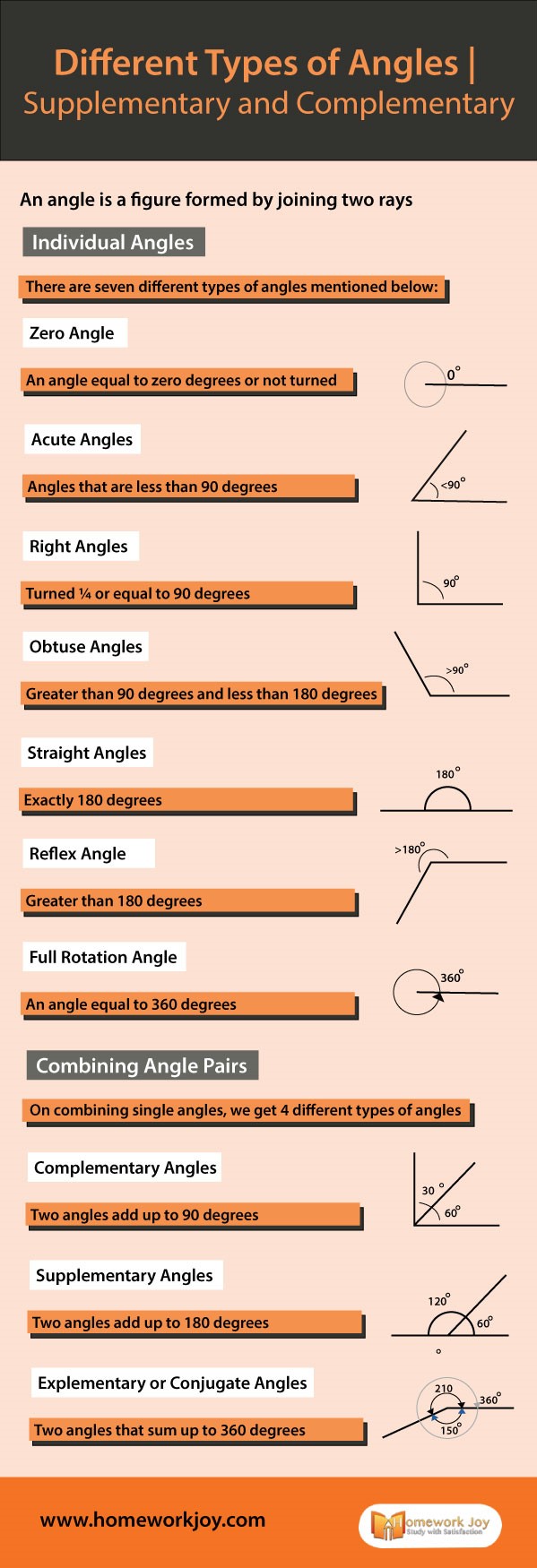An angle is a figure formed by joining two rays. In simple words, when two lines intersect each other, an angle is formed. As angles are base on geometry, learning about them is essential. Not only straight lines but curve lines can also form angles by intersecting each other. Angles can be denoted by ∟ABC, which means that line segment AB and BC are forming and angle when they meet up.
Before heading forward, see different geometrical shapes that have different types of angles. Also, see how to make math learning fun.
5 Funny Classroom Games to Learn Math
There are different types of angles that we’ll be discussing here. First, understand that the angles are of categories: Individual angles and Combined angles.
Individual Angles
There are seven different types of angles mentioned below:
Zero Angle
An angle equal to zero degrees. It is probably a line that has not turned into an angle. It can be curved or straight as well.
Acute Angles
The angle which is less than or 90 degrees is known as an acute angle. This type of angle will always be smaller than right angles.
Right Angle
Angles that turned ¼ or equal to 90 degrees are right angles. These angles are always more than acute. Lines that form right angles are known as perpendicular lines or orthogonal.
Obtuse Angle
Obtuse angles are in the middle of right angles and straight angles. It means these angles are greater than 90 degrees and less than 180 degrees.
Straight Angle
When the measured angle is precisely 180 degrees, it is a straight angle. The radian for straight angles is pie (π).
Reflex Angle
Those angles, which are between straight angles and rotation angles, are known as reflex angles, in simple words. Reflex angles are greater than 180 degrees and less than 360 degrees.
Full Rotation Angle
An angle marked equal to 360 degrees is full, complete, or rotation angle. These are generally denoted as two π in mathematical terms.
Combining Angle Pairs
There are four different types of angles based on combining individual angles:
Complementary Angles
When two acute angles combine, they form complementary angles. Both the angles of this type of angle add up to 90 degrees. Besides this, the two acute angles are adjacent.
Supplementary Angles
Two angles add up to form straight angles are known as supplementary angles. The sum of the two angles is 180 degrees.
Explementary or Conjugate Angles
The two angles that sum up to a complete angle or 360 degrees is known as explementary or conjugate angles.
So these were some different types of angles. If you need more information about maths, get instant math assignment help from experts.
